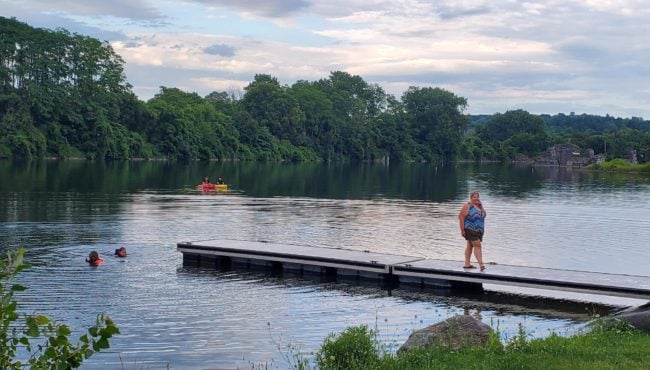Water quality in the Mohawk River: Data updates

View more images on our Flickr site
Since 2015, Riverkeeper, SUNY Cobleskill, SUNY Polytechnic Institute and Union College have collaborated on a water quality monitoring project in the Mohawk River watershed. Our latest data, gathered monthly from May through October, is available at riverkeeper.org.
Consistent with protocols that Riverkeeper and a range of other partners use to test the Hudson River and many of its tributaries, we test the water for fecal indicator bacteria (FIB), and compare results to EPA Recreational Water Quality Criteria in order to provide information about when and where water quality is safe for swimming and other primary contact recreation (jet skiing, tubing, child water play and any other activity where ingestion of water or immersion in the water is likely). Samples are gathered by professors, students and volunteers, and lab work is completed at SUNY Cobleskill, SUNY Poly and Union College.
To receive a monthly email with updated data sign up to receive emails from Riverkeeper. After inputting your name and email address, you will see a menu of options to define your interests. Choose “water quality” to receive updates when new data is available, monthly May through October.
Achieving swimmable water quality is a goal of the Clean Water Act, which marks its 50th year in 2022. It’s particularly important to the future of the Mohawk River, as the DEC’s Mohawk Basin Action Agenda, the Reimagine the Canals initiative, the creation of the Empire State Trail and related initiatives are reaching for goals to improve water quality and introducing more people to the joys of in- and on-water recreation.

Swimming and kayaking at Schoharie Crossing State Historic Site, at the confluence of Schoharie Creek and the Mohawk River (photo by Barb Brabetz).
Thanks to the state’s Clean Water Infrastructure Act and more recently the federal Infrastructure Investment and Jobs Act, there have been significant investments in wastewater infrastructure in recent years. Yet communities in the Mohawk River watershed have identified at least 37 sewage infrastructure projects in need of over $300 million to repair or upgrade pipes, pump stations and treatment plants. Riverkeeper is urging voters to approve the state Clean Water, Clean Air and Green Jobs Bond Act, and recently celebrated approval by the House of the NY NJ Watershed Protection Act, championed by U.S. Rep. Paul Tonko. Both would bring significant new opportunities for state and federal investments for water quality improvements, habitat restoration and climate resilience to the Mohawk watershed.
The latest data show that some locations met EPA’s criteria for safe swimming, while many did not. That’s not unusual. With six monthly samples per year from more than 40 sites in the Mohawk River and its tributaries, we have thousands of data points to define patterns. The most easily defined pattern is one that was first defined on the Hudson by Riverkeeper in partnership with Columbia University’s Lamont-Doherty Earth Observatory: Water quality is often worse after rain, as runoff from the watershed and overflows from combined sewers or infrastructure failures degrade water quality. Utica, Little Falls, Amsterdam, Cohoes and Waterford have combined sewer overflows (CSOs) that are designed to discharge raw sewage to the Mohawk River when it rains. You can review some findings from our project in this short summary report, Mohawk River Water Quality Monitoring Results, 2015-2021.
This month, Carolyn Rodak and her SUNY Poly co-authors, published related findings in the journal Water: “Observations and Correlations from a 3-Year Study of Fecal Indicator Bacteria in the Mohawk River in Upstate NY.” Barbara Brabetz and Neil Law, of SUNY Cobleskill, are making a presentation about engaging students with water quality data collection and analysis. We’re also exploring potential drivers of a concerning increase in FIB concentrations year-over-year.
While not conducted in the Mohawk Watershed, recent research by another partner, Julian Damashek of Utica University, correlates leaky sewer pipes & old septic systems with antibiotic resistant genes in surface water. Previous research by Queens College, supported by Riverkeeper, has identified antibiotic resistant bacteria in the Hudson River Estuary, and the same kind of leaky pipes are likely a source in the Hudson and its tributaries.
If you have questions or interest in partnering to engage the public in water quality improvements, please reach out to one of the partners involved in this effort:
Dan Shapley, Riverkeeper: [email protected]
Sebastian Pillitteri, Riverkeeper: [email protected]
Barb Brabetz, SUNY Cobleskill: [email protected]
Neil Law, SUNY Cobleskill: [email protected]
Carolyn Rodak, SUNY Poly: [email protected]
John Garver, Union College: [email protected]
